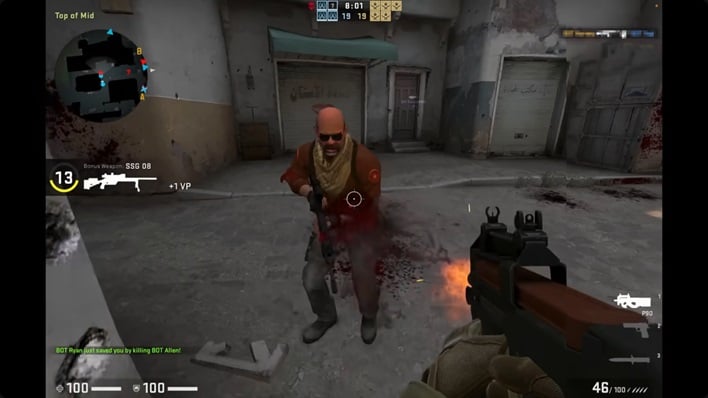
That’s right: the photo above is Neuralink’s second brain chip implant patient showing off his newly acquired Jedi mind tricks while playing a round of Counter-Strike 2. The patient, only known as Alex, has been undergoing a smooth recovery, according to Neuralink, and has been improving his ability to play video games as well as beginning to learn how to use computer-aided design (CAD) software to design 3D objects.
Nolan Arbaugh, Neuralink’s first brain chip implant patient, participated in a livestream on X/Twitter in March where he showed off his Chess skills, as well as talking about his love of playing Civilization VI. While Arbaugh did later experience a malfunction with the device, the company reported in May that it had resolved the issues. Now, a second patient has joined Arbaugh in Neuralink’s Prime Study, giving both patients back a sense of independence they thought they had lost forever.
Playing first-person shooters is one of Alex’s favorite past times. However, playing games such as Counter-Strike 2 requires the use of numerous inputs. On a gamepad, this includes two separate analog joysticks as well as numerous buttons. He could play shooters before the Neuralink implant via a mouth-operated joystick called the Quadstick, using sip-and-puff pressure sensors and a lip position sensor for clicking. However, the method limited the controller to only one joystick, and restricting him to either move or aim at any given moment. With the implant, Alex can now use the Neuralink in combination with his Quadstick to move and aim simultaneously like any other player.
“Just running around is so enjoyable because I can look side to side, and not need to move Quadstick left and right… I can [think about where to] look and it goes where I want it to. It’s insane,” he explained.
Alex also enjoys building and fixing things. Since his spinal cord injury, he has wanted to learn how to design 3D objects using CAD software without having to rely on his support system. However, it was made quite difficult due to the lack of control offered by assistive technologies at his disposal at the time.
With the Neuralink implant, however, Alex was able to use the CAD software Fusion 360 for the first time, designing a custom mount for his Neuralink charger. The design was then 3D printed and integrated into his setup.
“Taking an idea, putting it as a design, and actually having a physical item as a finished product makes me feel like I’m building things again,” Alex remarked.
Neuralink has stated that it wants to further its participants’ experience using their digital devices, and the company looks to expand the controls available to users of its implants. One example is decoding multiple clicks and multiple simultaneous movement intents to deliver full mouse and video game controller functionality. Another is developing algorithms to recognize handwriting intent to enable faster text entry.
As for Alex, he summed up his Neuralink experience thus far by remarking, “the Link is a big step on the path of regaining freedom and independence for myself.”